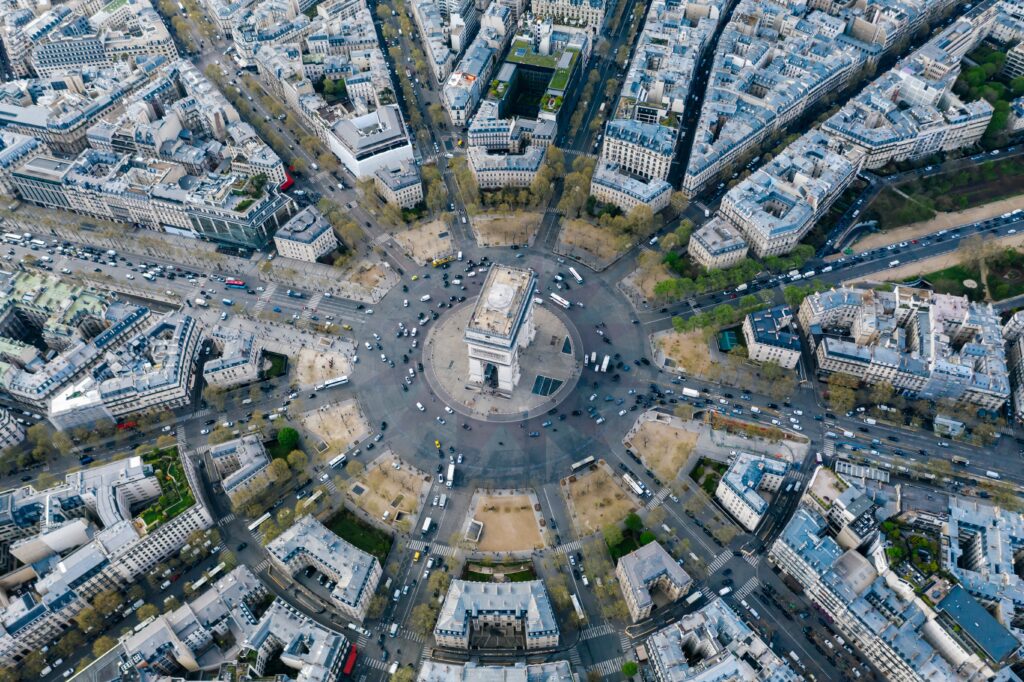Debunking Conspiracy Theories and Embracing Urban Transformation
The rise of conspiracy theories surrounding the “15-Minute City” concept has taken the world by storm, causing alarm and sparking heated debates. This seemingly innocent urban planning strategy, aimed at reducing traffic congestion and air pollution, and promoting active modes of transportation, has been falsely branded as “climate lockdowns” and “urban incarceration.” However, we need to take a closer look at the valuable potential of these cities and their ability to revolutionize urban living.
What is the 15-Minute Cities concept?
The idea behind 15-Minute Cities is straightforward: ensuring that essential amenities and services are within a 15-minute walk or bike ride from home.
This concept encompasses healthcare facilities, educational institutions, grocery stores, and green spaces. By creating compact, vibrant, and walkable urban environments, cities can enhance livability and connectivity while decreasing reliance on private vehicles.
As transportation accounts for approximately one-fifth of global human-caused, planet-warming emissions – with cars contributing over 40% – it becomes essential to explore alternative approaches to urban mobility.
Where was the 15-Minute City concept adopted?
The origins of the 15-Minute City concept can be traced back to urbanists like Jane Jacobs, who advocated for lively, compact urban environments. The 15-Minute City is partly derived from historical concepts of neighbourhood design, mixed-use, population density, and pedestrian friendliness as laid out by Jane Jacobs in “The Death and Life of Great American Cities”.
But the 15-Minute City as a model for urban development and urban mobility developed by Professor Carlos Moreno at the Sorbonne in Paris and promoted by Paris mayor Anne HidalgoIts popularity has spread worldwide, with cities like Paris, Ottawa, Melbourne, and Barcelona embracing the idea. For instance, Paris Mayor Anne Hidalgo made 15-Minute Cities a cornerstone of her 2020 reelection campaign, implementing measures such as car-free zones along the Seine, extensive cycling infrastructure, and the creation of mini parks. Similarly, Barcelona has been implementing a car-free strategy known as “superblocks,” while Portland and O’Fallon in the United States have introduced similar neighbourhood designs.

The COVID-19 pandemic played a significant role in bolstering the appeal of 15-Minute Cities as people reevaluated their local surroundings during lockdowns. The realization of living in well-served areas with nearby amenities became evident. However, this newfound popularity has also attracted a wave of backlash and conspiracy theories.
How did it provoke conspiracy theories?
The conspiracy theories surrounding 15-Minute Cities are driven by opportunistic actors who seek to distort climate action and engender fear. Especially climate-sceptic media figures, in collaboration with extreme conspiracy communities, propagated the notion of “climate lockdowns” to exploit genuine concerns about government overreach and capitalize on trauma induced by the pandemic. Disinformation spreads rapidly, especially within the climate discourse, and anything gaining attention becomes a target for controversy.
Critics of 15-Minute Cities argue that they may exacerbate existing social and economic disparities by fragmenting cities and concentrating resources in affluent areas. It is crucial to address these concerns and ensure that the implementation of such plans promotes inclusivity and equity. Local governments must engage in meaningful consultation with their communities to address legitimate worries and work towards a balanced solution.
The danger of these conspiracy theories lies in their potential to hinder climate action. Governments at every level face difficulty in implementing policies to address the climate crisis due to the surge of public mobilization against perceived threats to personal freedom.
The importance of societal needs
While it is important to scrutinize and refine urban planning strategies like 15-Minute Cities, it is equally crucial to separate fact from fiction. The core concept of creating compact, accessible, and sustainable urban environments should not be dismissed based on baseless claims. Instead, policymakers, urban planners, and communities should work together to ensure that 15-minute cities are implemented in a way that addresses societal needs, fosters equity, and mitigates environmental impact.
As society struggles with climate change and urbanization challenges, innovative solutions like 15-Minute Cities need to be considered. By focusing on accessibility, connectivity, and sustainability, cities can redefine how we live and move within our urban environments. Moving beyond conspiracy theories and engaging in informed discussions that pave the way for a greener, more inclusive future is essential.
My own experience is almost like a 15-Minute City experience
Living in the centre of Budapest was very close to the 15-Minute City concept. I have lived in the city centre for about 14 years, providing me with a highly convenient and efficient lifestyle. The central idea behind this concept is to ensure that all essential services and amenities are within a 15-minute walk or bike ride from one’s residence, and even though Budapest is not classified as a 15-Minute City, the proximity of all the amenities has significantly impacted my daily experiences. The proximity of necessities simplifies my daily routines.
Within a 10-minute walk, I can access the most famous market hall to find fresh produce, spices, and other essential items. This accessibility saves me time and effort, so I do not need long commutes or drive through congested traffic to do my shopping. The availability of shops and boutiques near my flat allows me to run errands and engage in shopping activities with ease.
The 15-Minute City concept also emphasizes the importance of recreational spaces and green areas. Even though Budapest does not belong to the category, it does so in certain districts. My neighbourhood has a well-maintained park where I can relax and enjoy nature. I can easily access the park for walks, picnics, and even group activities such as yoga classes.
Libraries, museums, and cultural centres are located within easy reach because most of these can be found in the fifth district. One of the most significant aspects of living in a 15-Minute City is the sense of community and social connectivity it promotes. Due to the nearby amenities and services, I have developed meaningful relationships with my neighbours and local business owners. I regularly go to the same small shops, the same market, and even in the supermarket, specific shop assistants know me. The face-to-face interactions and shared experiences foster a strong sense of belonging.
Living in a city designed around the principles of the 15-Minute City concept undoubtedly enhances anyone’s overall well-being and satisfaction with urban living.



